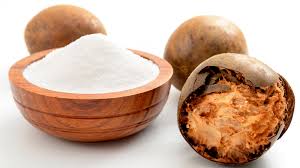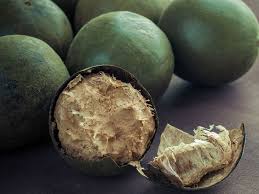
Cutting down on refined sugar consumption can be challenging, yet the potential health benefits make it a worthy endeavor (1Trusted Source). Thankfully, several naturally occurring sweeteners offer a nutritious alternative. These options are characterized by their low calorie content, minimal fructose levels, and pleasantly sweet taste.
Cutting back on refined sugar intake might pose a challenge, but considering its detrimental effects, the endeavor is undeniably worthwhile (1Trusted Source).
Luckily, several naturally occurring sweeteners offer a healthier alternative. These sweeteners boast low calorie counts, minimal fructose levels, and a satisfyingly sweet taste.
Introduction to Monk Fruit Sweeteners
Monk fruit sweeteners are natural, zero-calorie sweeteners extracted from the monk fruit. The monk fruit, also known as luohan guo or Buddha fruit, is a small green melon native to parts of Southeast Asia. Monk fruit has been used for centuries in traditional Chinese medicine, but the sweeteners made from it have only recently gained popularity in the West.

Monk fruit sweeteners are created by removing the seeds and skin of the fruit, then crushing the flesh and collecting the juice. The sweet components, called mogrosides, are separated from the juice and turned into a concentrated powder or liquid. The end product contains zero calories and carbs while providing an intensely sweet flavor around 200 times sweeter than sugar.
As consumers move away from artificial sweeteners due to potential health concerns, monk fruit has emerged as a popular natural alternative. The sweeteners contain no artificial ingredients and derive their sweetness entirely from the fruit. Monk fruit is generally recognized as safe (GRAS) by the FDA. With a sugar-like taste and no bitter aftertaste, monk fruit sweeteners allow people to reduce sugar and calories in their diet without sacrificing sweetness. Their surge in popularity reflects the growing demand for clean label, plant-based ingredients.
What is Monk Fruit?
Monk fruit, known by its scientific name Siraitia grosvenorii, is a small green melon that is native to southern China. It is also referred to as luo han guo or "Buddha fruit."
The monk fruit itself is small, round, and green with a sweet edible pulp and seeds inside. It is named "monk fruit" because it was first cultivated by Buddhist monks in 13th century China.
While the entire monk fruit is edible, only the juice and pulp are used to make monk fruit sweeteners. The sweet components, called mogrosides, are concentrated from the fruit pulp. This is different from other fruits where the juice is used directly. Monk fruit has no sugar content - the sweet taste comes from unique antioxidant mogrosides rather than fructose or sucrose like other fruits.

How Monk Fruit Sweeteners Are Made
Monk fruit sweeteners are made by extracting and isolating the natural sweet compounds called mogrosides from the monk fruit. The most common way to do this is a hot water extraction method. The monk fruits are crushed and then soaked in hot water to draw out the mogrosides. The liquid is then separated from the solids and purified to isolate the sweet mogrosides.
There are a few different forms of monk fruit sweeteners:
Monk fruit juice concentrates - These are liquids that have been concentrated to contain very high levels of the sweet mogrosides. They can be diluted to make a sweetener.
Monk fruit powder - The mogrosides are dried into a powdered extract. The powder is around 150-200 times sweeter than sugar Monk fruit liquid extracts - These monk fruit sweeteners contain the mogrosides dissolved in a liquid base. They can be used like liquid sweeteners.
So in summary, monk fruit sweeteners are made by first extracting the mogrosides from the raw monk fruit, likely using hot water extraction. Then the sweet compounds are isolated and concentrated into a juice, powder or liquid form to create the versatile, no-calorie sweeteners.
Taste and Sweetness of Monk Fruit
Monk fruit sweeteners derive their sweetness from compounds called mogrosides that are found in the flesh of the fruit. The mogrosides provide a natural sweetness without adding any calories. In fact, monk fruit extract is estimated to be around 200-300 times sweeter than regular sugar! But because the sweetness comes from plant compounds rather than sugar, monk fruit sweeteners contain zero calories per serving.
The taste of monk fruit has been described as very sweet and intense, without any bitter aftertaste. It is significantly sweeter than sugar, so only a small amount is needed in recipes and beverages. The sweetness has a slower onset compared to sugar but lingers in the mouth longer. When used in baking, monk fruit sweeteners can replicate the taste and texture of sugar quite well. Overall, monk fruit provides a zero-calorie sweetness that tastes naturally sweet, not artificial.
Benefits of Monk Fruit Sweeteners
Monk fruit sweeteners offer several health benefits that make them a smart choice over sugar or artificial sweeteners. Here are some of the main advantages of using monk fruit:
Zero Calories and Carbs - The sweetness of monk fruit comes from natural compounds called mogrosides that provide a very sweet taste but contain no calories or carbs. This makes monk fruit ideal for low-carb, ketogenic, and diabetic diets. You get the sweetness without extra calories or blood sugar impact.
Doesn't Raise Blood Sugar - Multiple studies have confirmed that monk fruit does not raise blood sugar or insulin levels, even in people with diabetes. This is because monk fruit is not actually sugar. It merely activates sweetness